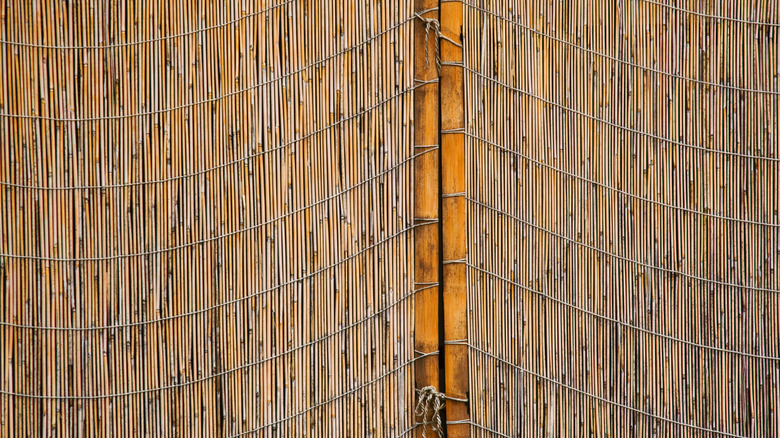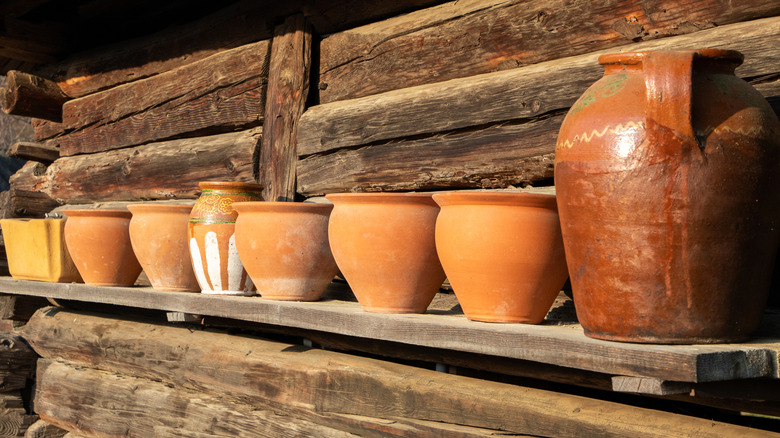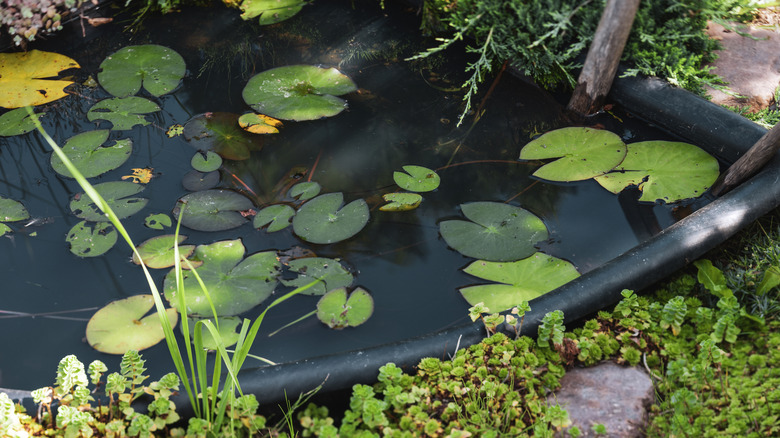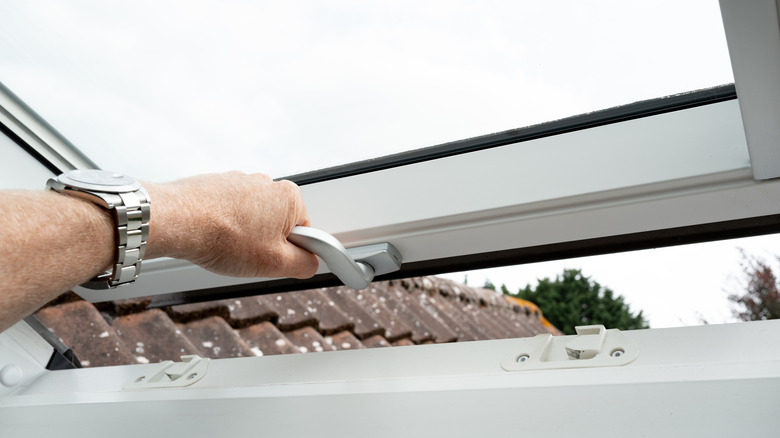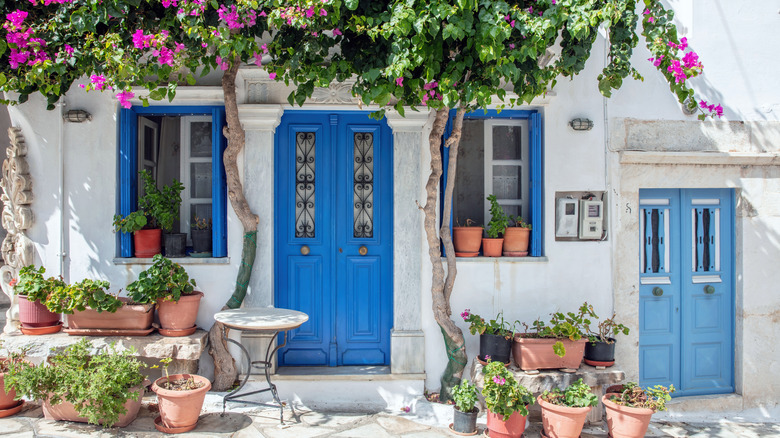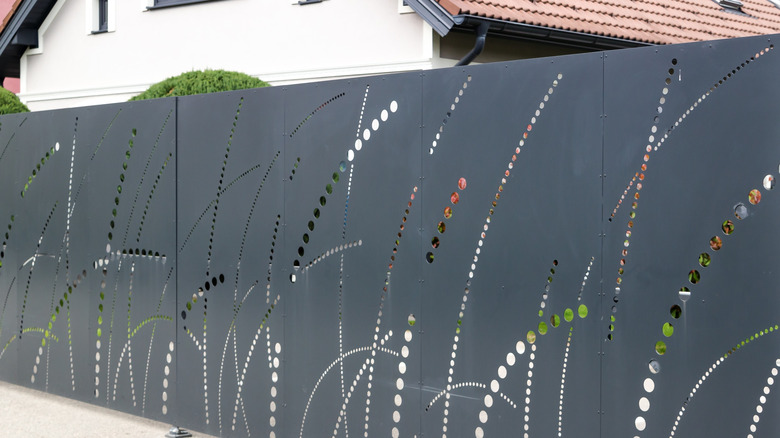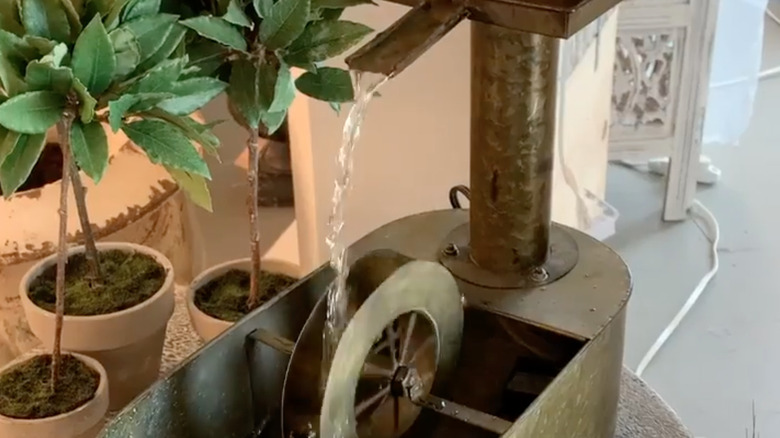7 Ancient AC Techniques That Cool Your Home And Lower Your Bill
We may receive a commission on purchases made from links.
Keeping your home at a comfortable temperature can sometimes feel like a constant battle, using air conditioning and fans, particularly if you live in an area with extreme heat. And it often isn't easy on your wallet, either. In fact, according to the U.S. Energy Information Administration, Americans have spent nearly 20% of their electricity consumption on air conditioning in recent years. This is because many modern solutions for excessive heat require gadgets that significantly impact your bills. But you can actually take notes from some ancient air-conditioning techniques to keep your home cool without adding to your household expenses.
Believe it or not, multiple ancient civilizations, such as the Romans, Persians, and Chinese, actually used early forms of air conditioning — such as water features and windcatchers — to keep their spaces cool during hot weather. Some of these tactics — such as architectural designs — aren't easy to replicate in an existing modern home. However, plenty of these techniques are still valuable today. So, why not take a trip through ancient history and note down some of the creative ways to cool your room without air conditioning or racking up your electricity bill?
Hanging wet reeds
The ancient Egyptians actually used an early form of a window air conditioning unit around 2,600 BC by hanging reeds soaked in water over ventilated areas, such as doorways. This meant that air could pass through and be cooled by the moisture in the reeds on the way, a bit like a modern-day swamp cooler. While you may not have ready access to reed mats like the ancient Egyptians, you could always try out this technique using wet cloth hung over doors, windows, or any area of your home that gets a regular draft.
Water-filled pots
The Egyptians also used water-filled clay pots to cool the air around them. Clay is a permeable material that absorbs water, so as the liquid in the pot's outer layer evaporates in the breeze, it cools the air down around it. This technique has been used as recently as last year in places like India, which experiences severe heat at certain times of year. Try this method yourself by filling unglazed terracotta pots and jugs with water. Just make sure to place a ceramic or plastic saucer underneath each one, as they may leak from the bottom.
Water features
The ancient Romans are well-known for inventing the aqueduct, which allowed them not only to transport water but also to cool their homes by running it through the walls. While you may not be able to construct a Roman-style aqueduct in your home, you could take a page from their other evaporative cooling methods, such as placing water features in rooms and courtyards. The Romans also increased this effect by incorporating plants that release additional moisture and cool the air. To try out this technique, add a water feature and some plants to make your house feel cooler.
Windcatching
In ancient Persia — which is now Iran — tall windcatcher towers called 'bâdgir' were used to draw cool air into a building from the top and circulate it down to the spaces below. While your home may not have a special cooling tower, you could always take inspiration from the design of these windcatchers to cool your own home. First, make note of the direction of incoming drafts and open a door or window to allow the cool breeze in. Then, open a window or skylight higher up to help the warm air escape as it rises.
Light-colored paint
The ancient Greeks had to deal with high temperatures, too, and their coping strategies are still visible today. Greek towns and villages painted with traditional whitewash not only have an iconic look but also serve a purpose. Light colors reflect sunlight instead of absorbing it, so anything painted in shades such as white or light brown will be less affected by the sun's rays. So, if your home is consistently overheating and your air conditioning bills are adding up, why not try painting the exterior a lighter color to help reflect sunlight rather than absorb it?
Screens
In ancient India, the invention of the jaali was vital for protecting interiors from the harsh sun and the heat that it brought. These screens — usually decorated with geometric patterns — added a cushion between the main building and the outer sunlight. Originally made out of stone, you can take inspiration from the jaali by using an outdoor screen or divider to help reduce heat in your home. Look for windows or walls that receive the most direct sunlight, and place the divider about 4 feet away on the outside to create a buffer and prevent the sun from heating your home.
Water wheels
In China during the Han Dynasty, an invention by artisan Ding Huan helped make the imperial court a much cooler place to be — literally. By crafting a man-powered fan, he helped air circulate throughout the space. The invention then became water-powered, which was even more effective, as it allowed water particles to spray around the room and evaporate, thus cooling the air. Try out this technique today by opting for a fountain that incorporates moving water, such as this BBabe Cascading Tabletop Fountain, or even one that features a water wheel to model Ding Huan's invention.

